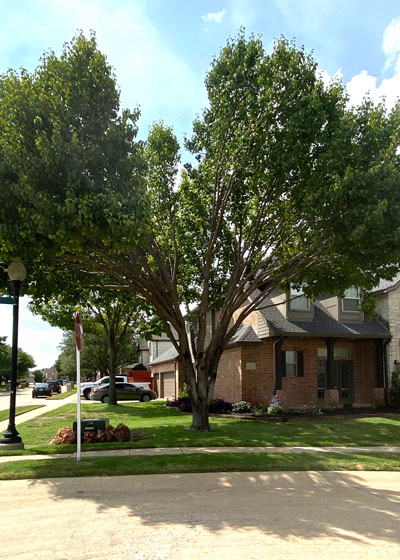Why a Tree Fell From Favor
I’m about to write about Bradford pears, but my words apply to all the other types of ornamental pears to one degree or another. We’ve come to realize that they all have a major shortcoming that renders them useless or even downright hazardous.
• It’s not that they’re susceptible to fire blight, the damaging or occasionally fatal bacterial infection that causes branches to turn black almost overnight and die back, almost as if they’d been burned by a blowtorch.
• It’s not that they’re highly susceptible to cotton root rot, the quickly fatal soil-borne fungus that kills mature trees within just a week or two (and for which we have no dependable preventive measure, nor do we have any cure).

• It’s the fact that these ornamental pears all have very weak branch angles. You can see it in this photograph. The many branches all arise from just about the same height on the trunk and they all ascend almost vertically. In doing so they pinch together. They trap old bark, moisture, leaves and other debris in those crotches, and all of that “stew” prevents the wood of the trunks from growing together firmly.
Eventually a strong gust of wind, ice or just the weight of one of the branches causes it to break out of the tree’s canopy leaving a gap just like this. Sometimes it’s half of the tree and a deep gash is left in the trunk.
This usually happens after the tree is 10 to 15 years old and there isn’t anything you can do to prevent or stop it. It’s just what these ornamental pears do.

So, my warning to you as spring unfolds and the winds start to pick up: If you have a mature ornamental pear, especially one that has a branch or two with discolored yellow leaves, you might want to have it taken down before it falls and hurts someone or something.
And, to prevent sprouts of the thorny Callery pear rootstock from coming up all over your yard from the root system, drill holes into the stump and pour a 2,4-D broadleafed weedkiller in at full strength.
